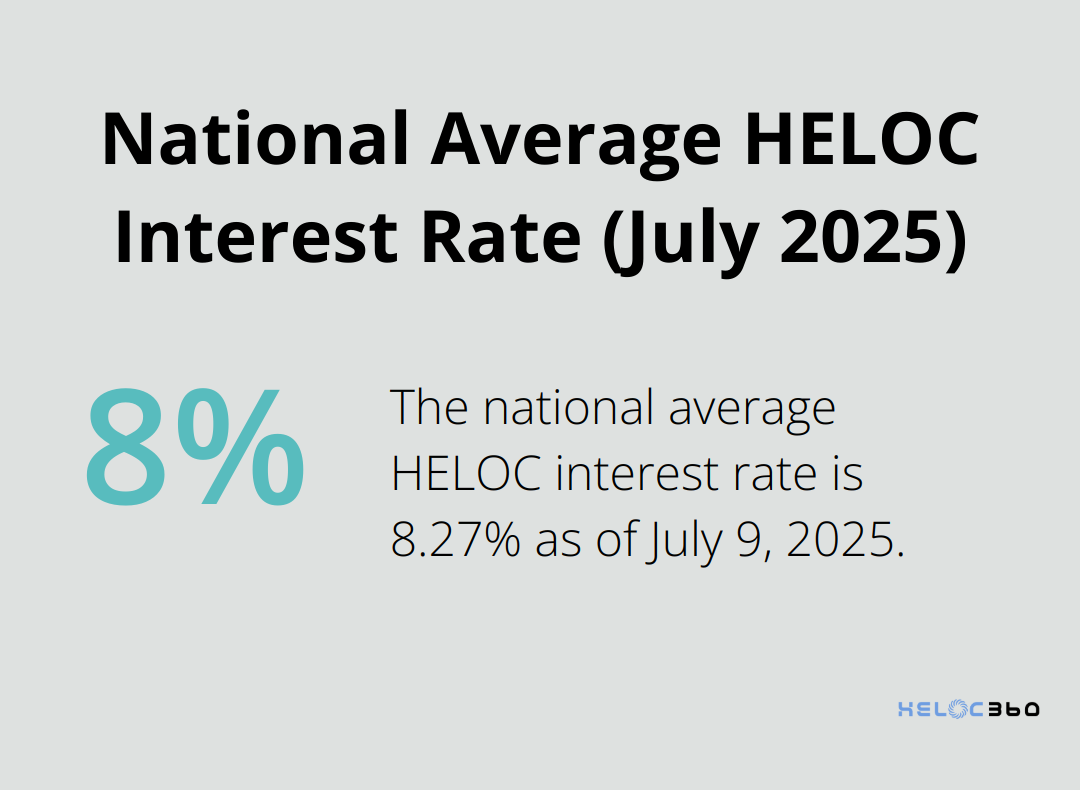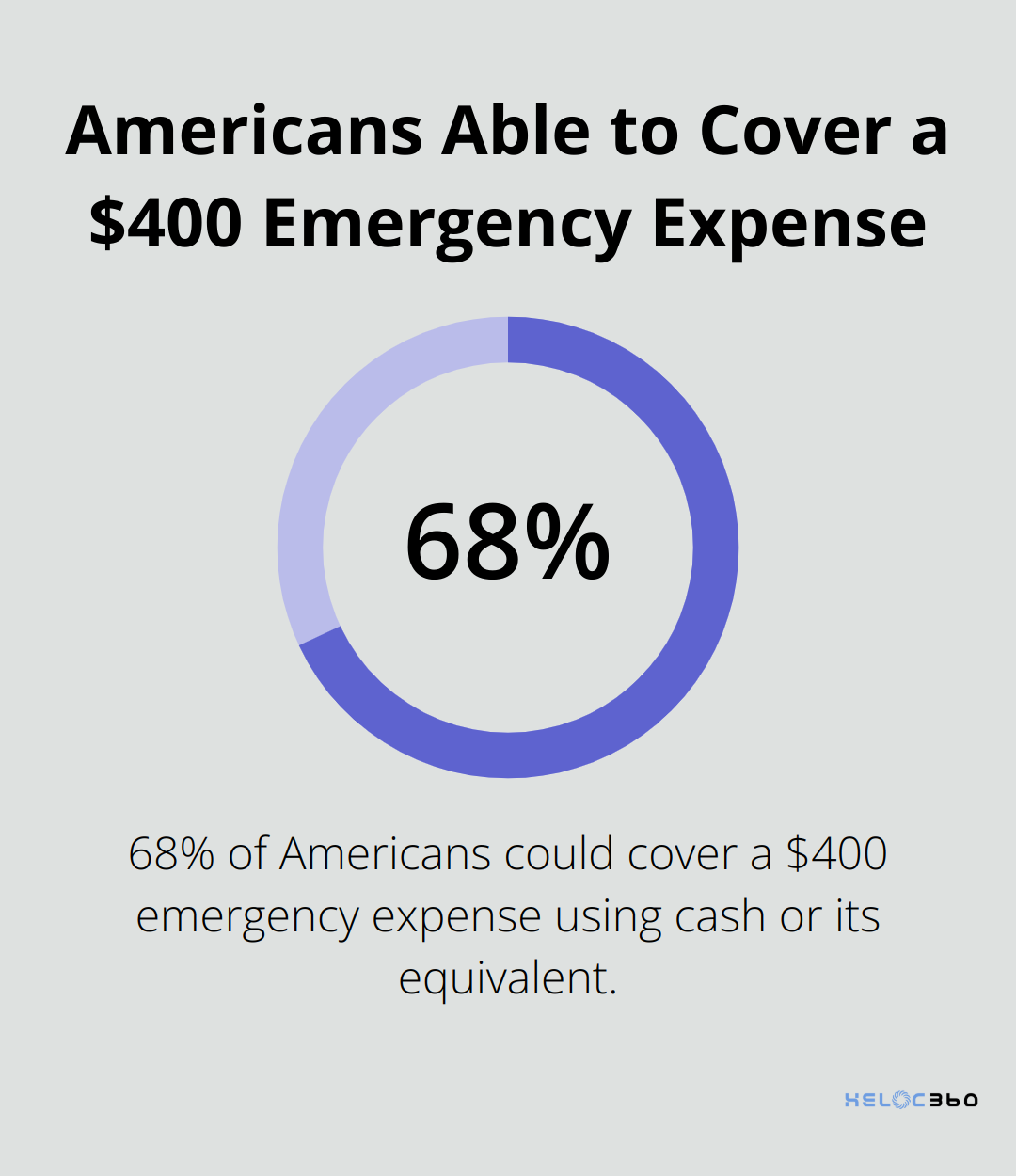At HELOC360, we understand that using a Home Equity Line of Credit (HELOC) can be a powerful financial tool. However, it’s crucial to approach it with caution and implement HELOC protection strategies.
This blog post will guide you through the potential risks of HELOCs and provide practical strategies to safeguard your finances. We’ll explore responsible usage techniques and discuss how to build financial safeguards to ensure your HELOC works for you, not against you.
What Are the Real Risks of HELOCs?
Home Equity Lines of Credit (HELOCs) offer powerful financial leverage, but they come with significant risks. We at HELOC360 believe it’s essential for every borrower to understand these potential pitfalls before tapping into their home equity.
Interest Rate Fluctuations Can Increase Your Payments
HELOCs typically feature variable interest rates, which can lead to unpredictable monthly payments. The national average HELOC interest rate is 8.27% as of July 9, 2025, according to Bankrate’s latest survey of the nation’s largest home equity lenders. However, this rate isn’t set in stone. Market conditions and changes in the prime rate can cause it to fluctuate. For example, a 1% rate increase on a $100,000 HELOC balance could add hundreds of dollars to your annual payments.

To protect yourself:
- Set aside extra funds monthly to cover potential rate increases
- Ask lenders about rate caps (which limit how much your rate can increase)
- Consider fixed-rate options for more predictable payments
Overborrowing: A Common Pitfall
The ease of access to funds through a HELOC can lead to overborrowing. The National Association of Realtors reports that while 85% of HELOC borrowers use their funds for home improvements, 30% also use them for debt consolidation or major purchases.
To avoid this trap:
- Create a detailed budget before opening a HELOC
- Determine your exact funding needs and purpose
- Set a strict personal borrowing limit (even if it’s lower than the lender’s offer)
- Work with a financial advisor to create a solid usage and repayment plan
Default: The Most Serious Consequence
The most severe risk of a HELOC is the potential for foreclosure if you default on payments. Your home serves as collateral for the loan, which means the lender can seize your property if you fail to repay.
Mortgage delinquencies experienced a 60% drop from a pre-pandemic rate of 3.50% to a low of 1.39% in Q4 of 2021. While not all of these relate to HELOC defaults, it underscores the importance of a robust repayment strategy.
To mitigate this risk:
- Maintain an emergency fund covering at least six months of expenses
- Explore payment protection plans offered by some lenders (these can cover your payments in case of job loss or disability)
- Stay proactive in communicating with your lender if you face financial difficulties
The Hidden Cost of Fees
Many borrowers overlook the impact of fees on their HELOC’s overall cost. These can include application fees, annual maintenance fees, and early termination fees.
To minimize fee impact:
- Ask for a detailed fee schedule from potential lenders
- Negotiate fee waivers or reductions (especially if you have excellent credit)
- Factor all fees into your cost calculations when comparing HELOC offers
As we move forward, it’s important to understand that while these risks exist, they can be managed with proper planning and strategy. In the next section, we’ll explore effective strategies for responsible HELOC usage that can help you maximize the benefits while minimizing potential drawbacks.
How to Use a HELOC Responsibly
Create a Detailed Repayment Plan
Before you apply for a HELOC, map out a clear repayment strategy. A study by the Federal Reserve Bank of Philadelphia highlights the importance of understanding the risks associated with HELOCs, as guidance was issued regarding their potential for default.
Calculate your maximum monthly payment based on your current income and expenses. Factor in potential interest rate increases (add 2% to the current rate as a buffer). This approach will help you avoid financial strain if rates rise.
Set up automatic payments to ensure you never miss a due date. Many lenders offer discounts for automatic payments, which can save you money over time.
Invest in Value-Adding Home Improvements
One of the smartest ways to use your HELOC is for home improvements that increase your property’s value. The National Association of Realtors’ 2025 Remodeling Impact Report found that Americans spent an estimated $603 billion in 2024 on remodeling their homes.
Focus on projects with high ROI:

These improvements not only enhance your living space but also build additional equity, creating a positive financial cycle.
Monitor Your Credit Utilization
Your credit utilization ratio (the amount of credit you’re using compared to your credit limits) plays a significant role in your credit score. Try to keep this ratio below 30%.
With a HELOC, it’s easy to lose track of your utilization. Set up alerts with your lender to notify you when you’re approaching 30% of your credit limit. This proactive approach helps maintain a healthy credit score, which can save you money on future borrowing.
Avoid Using Your HELOC for Everyday Expenses
While it might tempt you to use your HELOC as an extra credit card, this strategy carries risks. According to the Federal Reserve, total household debt rose by $167 billion to $18.20 trillion in their latest Quarterly Report on Household Debt and Credit.
Instead, reserve your HELOC for planned, strategic uses. If you consider your HELOC for groceries or utility bills, it’s time to reassess your budget and potentially seek financial advice.
These strategies will help you harness the power of your HELOC while protecting your financial future. A HELOC is a tool – its effectiveness depends on how you use it. In the next section, we’ll explore how to build additional financial safeguards to further protect your finances when using a HELOC.
How to Build a Financial Safety Net
Create a Robust Emergency Fund
An emergency fund serves as your first line of defense against financial setbacks. A 2024 Federal Reserve survey revealed that only 68% of Americans could cover a $400 emergency expense using cash or its equivalent. This statistic highlights the importance of a solid financial cushion.

We recommend you set aside at least 3-6 months of living expenses in a high-yield savings account. This fund should remain separate from your HELOC and easily accessible. For example, if your monthly expenses total $3,000, try to accumulate an emergency fund of $9,000 to $18,000.
Diversify Your Investment Portfolio
Don’t concentrate all your assets in one place. Diversification helps manage risk and potentially increases returns. Chasing performance and the fear of missing out can be psychological barriers to keeping a balanced and diversified portfolio.
Consider allocating your investments across different asset classes:
- 60% in stocks (mix of domestic and international)
- 30% in bonds
- 10% in alternative investments like real estate investment trusts (REITs)
This balanced approach can protect your wealth from market volatility while still allowing for growth.
Explore Insurance Options
Insurance acts as a financial safety net, protecting you from unexpected events that could derail your finances. The Insurance Information Institute reports that 40% of Americans don’t have life insurance (a gap that leaves many families financially vulnerable).
Consider these insurance options:
- Term life insurance: Provides coverage for a specific period, typically 10-30 years.
- Disability insurance: Replaces a portion of your income if you become unable to work due to illness or injury.
- Umbrella insurance: Offers additional liability coverage beyond your home and auto insurance limits.
Maintain a Healthy Credit Score
A good credit score can provide financial flexibility and better terms on loans and credit cards. Monitor your credit report regularly and address any errors promptly. Pay your bills on time and keep your credit utilization low (ideally below 30% of your available credit).
Create Multiple Income Streams
Relying on a single income source can leave you vulnerable to financial shocks. Explore ways to diversify your income:
- Start a side business
- Invest in dividend-paying stocks
- Consider rental property income
- Freelance in your area of expertise
Multiple income streams can provide financial stability and help you reach your goals faster. A HELOC can also serve as a financial safety net when used responsibly, providing flexibility for ongoing or uncertain expenses.
Final Thoughts
Managing a HELOC effectively requires a proactive approach to financial planning and risk management. You can implement strategies to protect your finances by understanding potential risks such as interest rate fluctuations and overborrowing. Creating a clear repayment plan, using funds for value-adding purposes, and monitoring your credit utilization are key steps in responsible HELOC usage.
Building financial safeguards is equally important for HELOC protection. You should maintain an emergency fund, diversify your investments, and consider appropriate insurance options to provide a safety net against unexpected financial challenges. These strategies work together to create a robust financial foundation that supports your HELOC and overall financial health.
For personalized guidance on how to make the most of your home equity, we recommend exploring HELOC360. Our platform offers tailored solutions to help you navigate the complexities of HELOCs and achieve your financial aspirations. We provide expert advice and connect you with lenders that match your unique needs (ensuring you have the support necessary to make informed decisions about your home equity).
Our advise is based on experience in the mortgage industry and we are dedicated to helping you achieve your goal of owning a home. We may receive compensation from partner banks when you view mortgage rates listed on our website.
